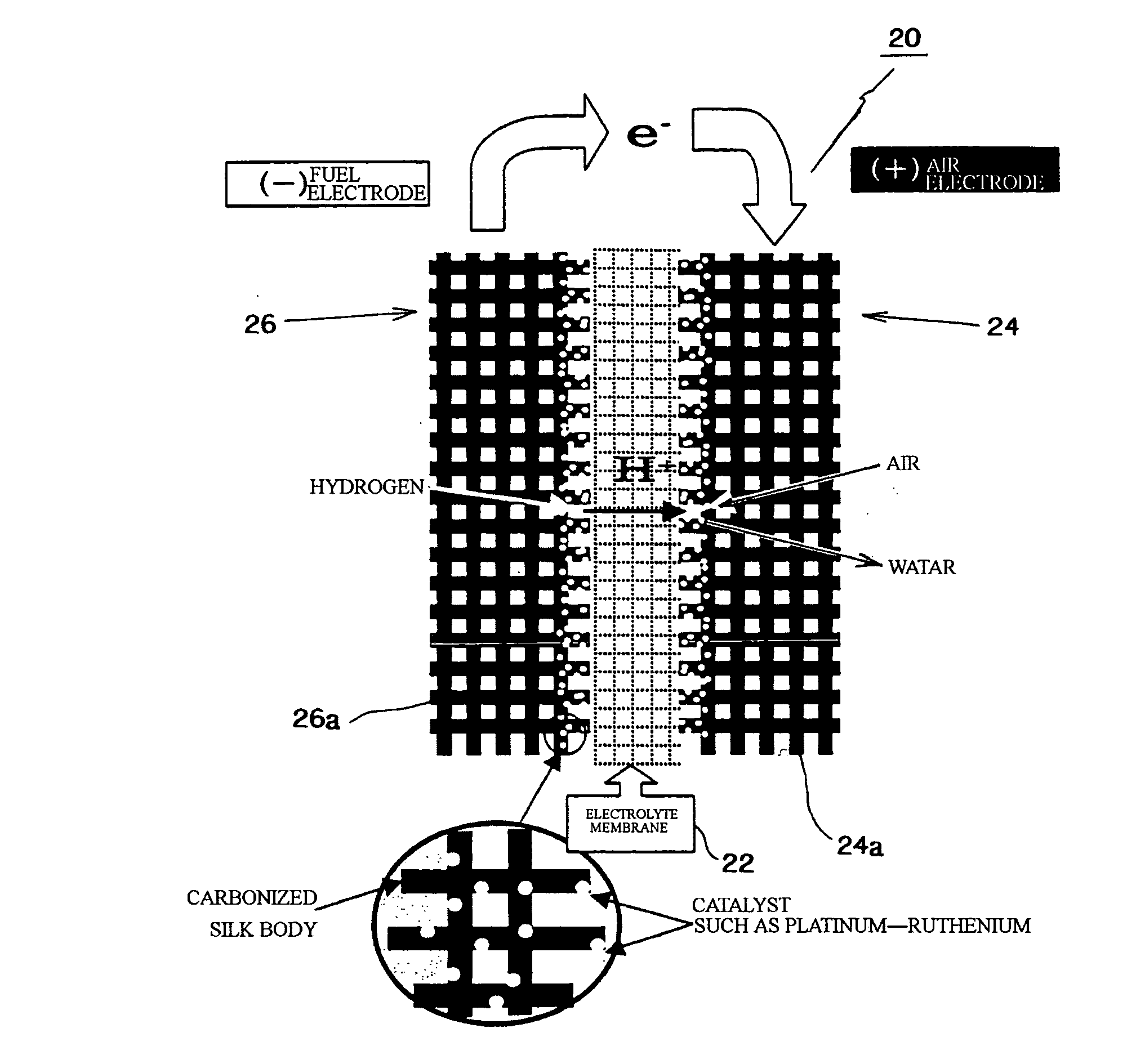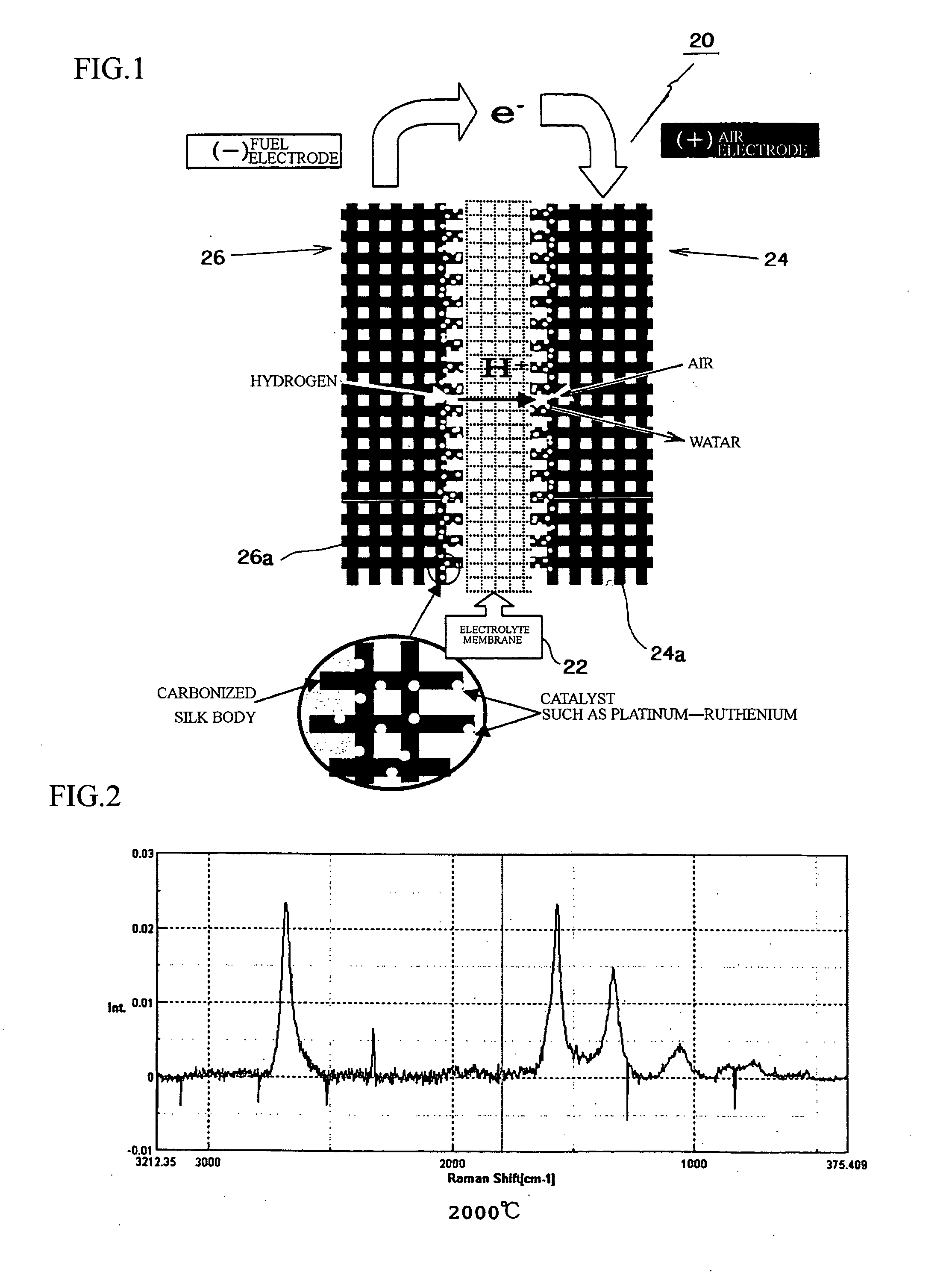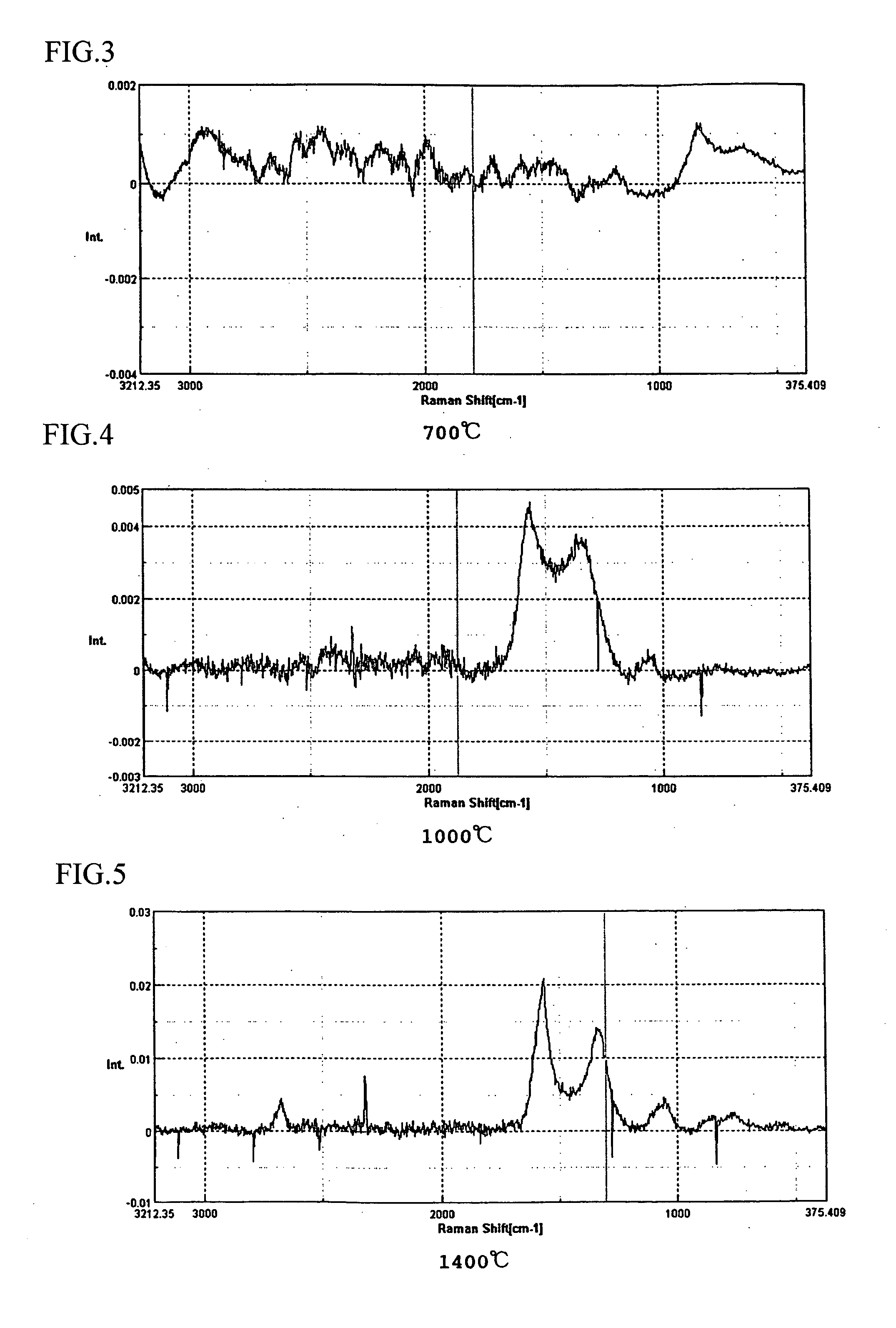Fuel cell, electrode material for fuel cell and method for producing same
- Summary
- Abstract
- Description
- Claims
- Application Information
AI Technical Summary
Benefits of technology
Problems solved by technology
Method used
Image
Examples
example 1
[0092] A silk material was heated in a nitrogen gas atmosphere until reaching first temperature (450° C.) with low temperature rising rate of 50° C. / hour, then the material was burned at the first temperature for five hours as the primary burning. Next, the burned material was once cooled until reaching the room temperature, then the material was reheated in the nitrogen gas atmosphere until reaching second temperature (1,000° C.) with low temperature rising rate of 50° C. / hour, then the material was burned at the second temperature for five hours as the secondary burning. Further, the burned material was cooled until reaching the room temperature, then the material was reheated in the nitrogen gas atmosphere until reaching third temperature (2,000° C. or final burning temperature) with low temperature rising rate of 50° C. / hour, then the material was burned at the third temperature for five hours as the third burning. Then, the burned material was cooled, so that the carbonized sil...
example 2
[0095] A silk material was heated in a nitrogen gas atmosphere until reaching first temperature (450° C.) with low temperature rising rate of 50° C. / hour, then the material was burned at the first temperature for five hours as the primary burning. Next, the burned material was once cooled until reaching the room temperature, then the material was reheated in the nitrogen gas atmosphere until reaching second temperature (1,000° C.) with low temperature rising rate of 50° C. / hour, then the material was burned at the second temperature for five hours as the secondary burning. Further, the burned material was cooled until reaching the room temperature, then the material was reheated in the nitrogen gas atmosphere until reaching third temperature (2,000° C. or final burning temperature) with low temperature rising rate of 50° C. / hour, then the material was burned at the third temperature for five hours as the third burning. Then, the burned material was cooled, so that the carbonized sil...
example 3
[0097] A silk material was burned in a nitrogen gas atmosphere at final burning temperature of 1,400° C. as well as the above described examples, then the burned material was cooled until reaching the room temperature so as to obtain a carbonized silk body. Carbon powders, which support the catalyst metals, were mixed with a nafion solution or the like so as to form into paste, the paste was applied to the carbonized silk body, and the carbonized silk body was heated so as to volatilize the solution, so that a catalyst layer was formed on the carbonized silk body. The carbonized silk body having the catalyst layer was used as a diffusion layer, and a nafion electrolyte membrane was inserted therein and hot-pressed, so that an MEA (membrane-electrode adelphus ???), which was a constitutional unit of a fuel cell, was formed. Measured output characteristics of the MEA (membrane-electrode assembly) are shown in FIGS. 8 and 9. FIG. 8 shows I-V characteristics; FIG. 9 shows I-W characteri...
PUM
 Login to View More
Login to View More Abstract
Description
Claims
Application Information
 Login to View More
Login to View More - R&D
- Intellectual Property
- Life Sciences
- Materials
- Tech Scout
- Unparalleled Data Quality
- Higher Quality Content
- 60% Fewer Hallucinations
Browse by: Latest US Patents, China's latest patents, Technical Efficacy Thesaurus, Application Domain, Technology Topic, Popular Technical Reports.
© 2025 PatSnap. All rights reserved.Legal|Privacy policy|Modern Slavery Act Transparency Statement|Sitemap|About US| Contact US: help@patsnap.com



